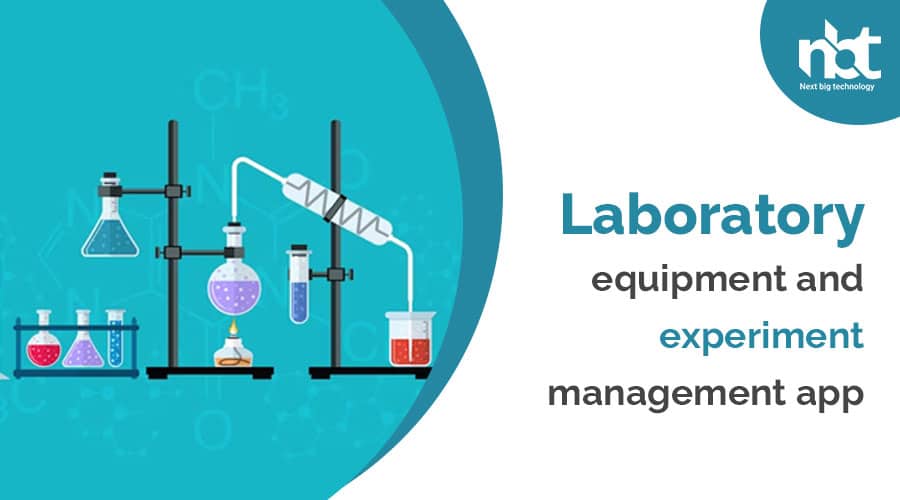Table of Contents
Introduction to Lab Management Apps
Laboratories stand as the epicenter of innovation, where ideas spark, experiments unfold, and groundbreaking discoveries emerge. However, the traditional landscape of lab management often grapples with challenges—juggling equipment maintenance, data organization, experiment protocols, and collaboration among researchers.
In response to these complexities, the emergence of Laboratory Management Apps signifies a monumental shift, reshaping the very foundation of scientific inquiry and experimentation.
Evolution Beyond Conventional Methods
Historically, laboratory management relied heavily on manual processes, spreadsheets, and disparate systems. This conventional approach led to inefficiencies, data silos, and a substantial administrative burden that impeded the pace of research.
Enter the era of Laboratory Management Apps, where technological prowess converges with scientific rigor to address these challenges. These applications offer a unified, digital ecosystem that harmonizes equipment management, experiment workflows, data handling, and team collaboration.
A Paradigm Shift: Features Redefining Lab Dynamics
Centralized Equipment Oversight
Imagine a comprehensive platform that catalogs and monitors laboratory equipment—its usage, maintenance schedules, and availability—streamlining the utilization of resources and ensuring operational continuity.
Optimized Experiment Workflows
Experiment management apps streamline processes by enabling researchers to map out experimental protocols, set milestones, and track progress in real-time, fostering efficiency and transparency.
Data Integration & Analysis Hub
By consolidating data into a singular repository, these apps facilitate seamless analysis and interpretation. Integrated with analytical tools, they empower researchers to derive insights swiftly, propelling scientific understanding.
Enhanced Collaboration Channels
These apps serve as hubs for collaboration, allowing researchers to exchange ideas, share protocols, and collectively analyze findings within a secure digital environment, transcending geographical barriers.
Pioneering Scientific Progress
The integration of these apps transcends convenience; it cultivates an environment ripe for innovation. Researchers can redirect their focus from administrative hassles to the core of scientific exploration, accelerating the pace of discoveries.
Moreover, the collaborative synergy fostered by these apps acts as a catalyst for interdisciplinary cooperation, potentially sparking serendipitous discoveries and catalyzing scientific breakthroughs.
Features of Effective Laboratory Management Apps
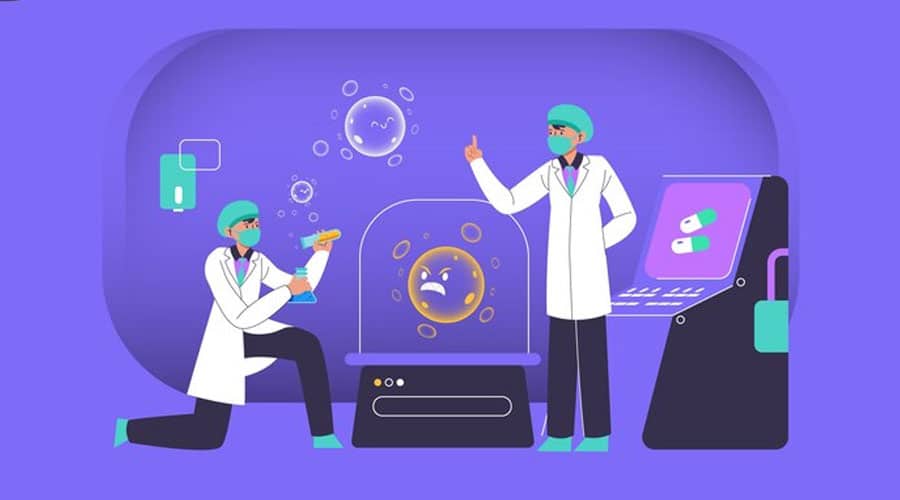
let’s delve deeper into additional features that contribute to the effectiveness of laboratory management apps:
Customizable Workflows:
One size doesn’t fit all in the realm of scientific experimentation. Effective apps offer customizable workflows that cater to diverse research needs. Researchers can tailor protocols, experiments, and data collection methods, ensuring flexibility and adaptability across various scientific disciplines.
Compliance and Regulatory Support:
Navigating the complex web of regulations and compliance standards can be daunting for researchers. Robust laboratory management apps integrate compliance checks and reminders, ensuring adherence to industry standards and regulatory requirements. This feature not only mitigates risks but also facilitates smoother audits and approvals.
Equipment Utilization Analytics:
Understanding equipment usage patterns is crucial for optimizing resources. Advanced apps offer analytics modules that provide insights into equipment utilization rates, downtime analysis, and predictive maintenance. Researchers can make informed decisions about resource allocation, minimizing downtime and maximizing productivity.
Mobile Accessibility and Remote Monitoring:
In a world where mobility is key, effective apps offer mobile compatibility, enabling researchers to manage experiments and equipment remotely. Real-time monitoring of experiments and equipment status via mobile devices empowers researchers to stay connected and responsive even when away from the laboratory.
Integration with IoT and Smart Devices:
The convergence of laboratory equipment with IoT technology is a game-changer. Apps that seamlessly integrate with smart devices and IoT sensors enable real-time data collection and analysis. Researchers can monitor variables, such as temperature, pH levels, or pressure, ensuring precise control and accuracy in experiments.
User Training and Support:
Transitioning to a new management system can pose challenges. A comprehensive app provides user-friendly interfaces along with training modules and support resources. This ensures that researchers and lab personnel can easily adapt to and maximize the potential of the app, minimizing disruptions to ongoing research.
Scalability and Collaboration across Institutes:
For larger research projects or collaborations spanning multiple institutes, scalability is vital. Effective apps offer scalability features that accommodate the needs of growing teams and collaborations. Cloud-based platforms facilitate seamless sharing and collaboration across different research institutions or departments, fostering a global scientific community.
AI-driven Insights and Predictive Analysis:
Harnessing the power of artificial intelligence, some apps provide predictive analysis based on accumulated data. Machine learning algorithms can identify patterns, suggest optimizations, and predict potential experiment outcomes, assisting researchers in making informed decisions and driving innovation.
Incorporating these advanced features into laboratory management apps not only streamlines operations but also empowers researchers to delve deeper into their experiments, fostering an environment ripe for groundbreaking discoveries.
Integration with Lab Equipment and IoT
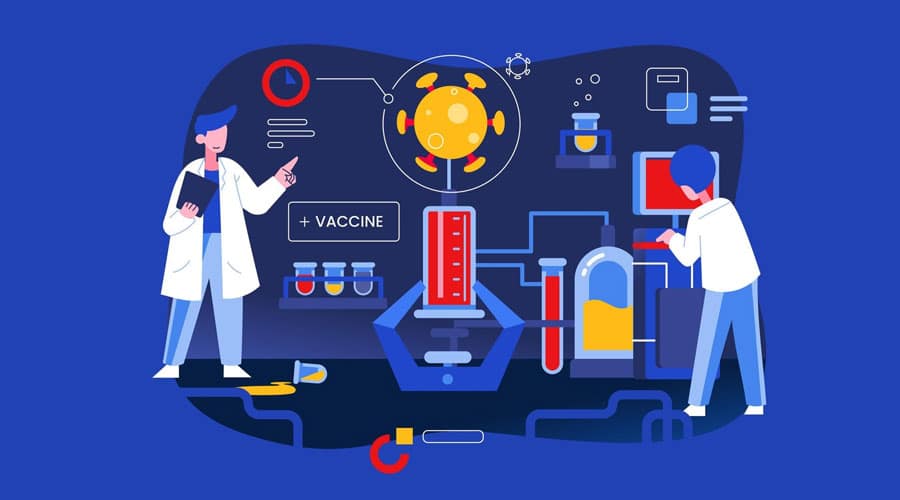
The synergy between laboratory equipment, experiment management, and the Internet of Things (IoT) has unveiled a new frontier in scientific research. Imagine a world where instruments communicate seamlessly, data flows effortlessly, and insights emerge in real-time—this is the power of integrating IoT with laboratory ecosystems.
The IoT Paradigm in Laboratories
The Internet of Things has transcended industries, and laboratories are no exception. Integrating IoT with laboratory equipment and experiment management apps entails embedding sensors and connectivity features into scientific instruments. These smart devices then communicate with the experiment management apps, creating a network that enhances efficiency and data accuracy.
Real-Time Monitoring and Control
IoT-enabled laboratory equipment can relay real-time data on usage, performance, and even environmental conditions. Imagine a scenario where researchers can remotely monitor equipment status, receive alerts for maintenance needs, and even adjust settings in real time. This capability significantly reduces downtime, optimizes resource utilization, and ensures experiments run smoothly.
Data Acquisition and Analysis
IoT integration facilitates continuous data acquisition from instruments. This influx of real-time data feeds directly into experiment management apps, enabling instant analysis. Researchers can access up-to-the-minute data, leading to quicker decision-making, more accurate insights, and the ability to adapt experiments on the fly based on live data streams.
Enhanced Safety and Compliance
IoT sensors can contribute to safety measures by monitoring factors like temperature, pressure, or hazardous conditions. They can trigger alerts in case of deviations from set parameters, ensuring the safety of researchers and maintaining compliance with stringent laboratory protocols.
Future Directions: Advancing Scientific Frontiers
The integration of IoT with laboratory equipment and experiment management apps is more than a technological upgrade—it’s a catalyst for scientific progress. The wealth of real-time data, coupled with the streamlined operations, accelerates research timelines and potentially leads to groundbreaking discoveries.
Moreover, as IoT technology continues to advance, the potential for innovation within laboratory ecosystems grows exponentially. From predictive maintenance of equipment to AI-assisted data analysis, the future holds limitless possibilities for enhancing efficiency and driving scientific breakthroughs.
Embrace the Future of Laboratories
In this era of digital transformation, laboratories stand at the precipice of a paradigm shift. Embracing IoT integration within laboratory equipment and experiment management apps isn’t merely an option; it’s a leap toward heightened efficiency, precision, and the democratization of scientific discovery.
The future of laboratories is interconnected, intelligent, and data-driven. It’s a world where IoT seamlessly converges with scientific exploration, empowering researchers to push the boundaries of knowledge and usher in a new era of scientific excellence.
Case Studies and Success Stories

Case Study 1: Biotech Innovations Inc.
Challenge: Biotech Innovations Inc., a leading biotechnology firm, faced challenges in managing their diverse range of laboratory equipment and streamlining experiment workflows. Their manual processes led to equipment scheduling conflicts and data disorganization, hampering their research progress.
Solution: Implementing an experiment management app revolutionized their operations. The app provided a centralized platform to manage equipment inventory, schedule usage, and streamline experiment workflows. Real-time data analysis tools enabled swift decision-making.
Result: Biotech Innovations Inc. experienced a remarkable boost in efficiency. Equipment downtime reduced significantly, experiment workflows became streamlined, and data accuracy improved. Their researchers collaborated seamlessly, leading to the discovery of a breakthrough drug candidate.
Case Study 2: Academic Research Consortium
Challenge: A consortium of academic research labs faced collaboration hurdles due to disparate systems and lack of standardized protocols. Coordinating experiments across various labs became a daunting task, impeding their collaborative efforts.
Solution: Adopting an experiment management app transformed their collaboration landscape. The app facilitated protocol sharing, real-time progress tracking, and centralized data storage. Researchers could access standardized protocols and share findings effortlessly.
Result: The consortium witnessed a paradigm shift in collaboration. Researchers across labs seamlessly collaborated on experiments, reducing duplication of efforts and accelerating discoveries. Their collective efforts led to published papers in prestigious scientific journals.
Success Stories in Research Advancements
Additionally, highlighting success stories in scientific advancements attributed to the use of these apps can reinforce their significance:
- Drug Discovery Breakthrough: A pharmaceutical company credited the use of an experiment management app for expediting the drug discovery process. Real-time data analysis identified a potential drug compound, cutting down the research timeline significantly.
- Medical Breakthroughs: Medical research institutions leveraged these apps to collaborate on clinical trials. Streamlined workflows and data analysis enabled them to make strides in understanding diseases and developing novel treatment methodologies.
- Material Science Innovations: Research labs specializing in material science used these apps to optimize experimentation, leading to the creation of innovative materials with groundbreaking properties.
Including these case studies and success stories illustrates the tangible benefits and impact of laboratory equipment and experiment management apps, showcasing how these technological advancements have driven scientific progress and research breakthroughs across various fields.
Future Trends in Lab Management Apps
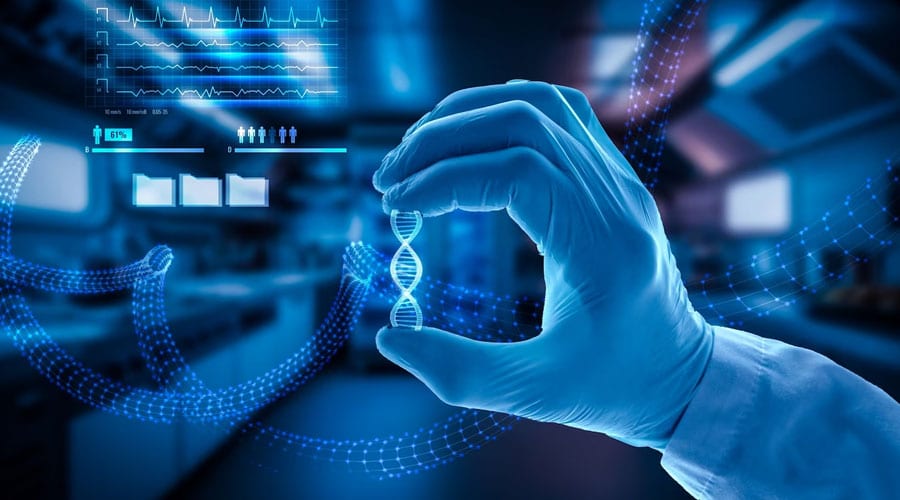
1. AI-Powered Predictive Analytics:
The integration of Artificial Intelligence (AI) and machine learning algorithms will revolutionize lab management. These technologies will predict equipment maintenance needs, optimize experiment parameters, and suggest methodologies based on historical data, enhancing efficiency and reducing errors.
2. IoT Integration for Smart Labs:
The Internet of Things (IoT) will play a pivotal role by connecting laboratory equipment and instruments. Real-time monitoring of parameters such as temperature, pressure, and sample conditions will become the norm, ensuring optimal experimental conditions and data accuracy.
3. Augmented and Virtual Reality (AR/VR) for Training and Simulations:
AR/VR technologies will transform training sessions and experimental simulations. Researchers will be able to virtually interact with equipment, conduct simulated experiments, and troubleshoot without physical setups, reducing costs and enhancing learning experiences.
4. Blockchain for Data Security and Integrity:
Blockchain technology will address data security concerns by ensuring tamper-proof records and maintaining the integrity of experimental data. Immutable ledgers will provide a secure and transparent framework for storing and sharing sensitive research information.
5. Cloud-Based Collaboration Platforms:
Enhanced cloud-based platforms will facilitate seamless collaboration among researchers across different geographical locations. Real-time sharing of protocols, data, and findings will foster global collaboration, allowing for diverse perspectives and accelerating discoveries.
6. Mobile Accessibility and Wearable Tech:
Mobile-centric applications and wearable devices tailored for laboratory use will become increasingly prevalent. Researchers will have on-the-go access to lab data, enabling them to monitor experiments and manage lab resources remotely.
7. Customization and Scalability:
Lab management apps will evolve to offer more customizable features, allowing researchers to tailor interfaces and workflows according to their specific experimental needs. Scalability will also be a key focus, ensuring adaptability to various lab sizes and research domains.
Embracing the Future of Lab Management Apps
The future of laboratory equipment and experiment management apps is undeniably exciting. These trends signify a shift towards more intelligent, interconnected, and user-centric solutions. As technology continues to advance, laboratories will witness unprecedented levels of efficiency, accuracy, and collaboration, ushering in a new era of scientific discovery and innovation.
Challenges and Considerations
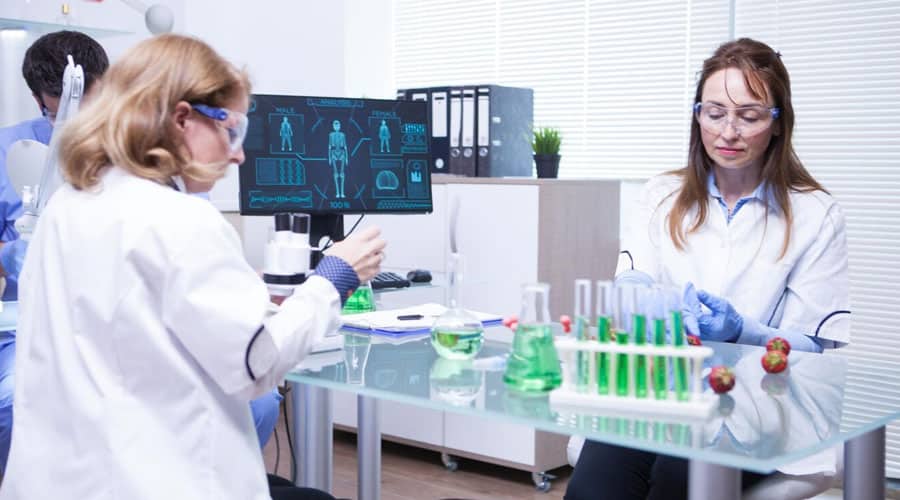
Challenges in Developing Laboratory Management Apps:
Integration Complexity:
- Diverse Equipment Compatibility: Laboratories house a wide array of equipment from various manufacturers. Ensuring seamless integration and compatibility across different devices can pose a significant technical challenge.
- Data Standardization: Harmonizing data formats and protocols across disparate instruments and systems is essential for unified data management.
Security and Compliance:
- Data Security: Given the sensitive nature of research data, ensuring robust security measures against breaches and unauthorized access is paramount.
- Compliance Requirements: Adhering to regulatory standards and compliance protocols (such as HIPAA for medical research) while handling and storing data adds complexity to app development.
User Interface and Adoption:
- Usability and User Experience: Designing an intuitive interface that caters to scientists, researchers, and laboratory staff with diverse technical backgrounds is crucial for user adoption.
- Training and Onboarding: Implementing effective training programs and onboarding processes to ensure smooth adoption and utilization of the app among laboratory personnel.
Key Considerations in Designing Laboratory Management Apps:
Scalability and Flexibility:
- Scalable Architecture: Building an app that can accommodate the growing needs of laboratories, handling increased data volumes, and expanding functionalities without compromising performance.
- Modular Approach: Designing the app in modules to allow for flexibility in adding new features or integrating with additional equipment and systems.
Data Management and Analysis:
- Interoperability: Ensuring seamless data exchange and interoperability with other lab systems and analysis tools.
- Advanced Analytics: Providing tools for advanced data analytics, visualization, and interpretation to derive meaningful insights from experimental data.
Regulatory Compliance and Ethical Considerations:
- Data Governance: Implementing robust data governance policies to meet regulatory compliance and ethical standards for data handling and sharing.
- Ethical Considerations: Addressing ethical concerns related to data privacy, especially in fields like genetics or human subject research.
Collaboration and Communication:
- Real-time Collaboration: Enabling real-time collaboration features such as chat, shared dashboards, and collaborative tools to enhance communication among researchers and teams.
Continuous Improvement and Feedback:
- Feedback Loops: Establishing mechanisms for gathering user feedback to iteratively improve the app based on user experiences and evolving needs.
Developing laboratory equipment and experiment management apps involves navigating these challenges while keeping a keen focus on creating a solution that enhances efficiency, collaboration, and scientific advancements within the research community.
Conclusion: The Evolution of Lab Management
In the relentless pursuit of scientific progress, the evolution of laboratory management stands as a testament to human ingenuity. From the labor-intensive, paper-laden systems of the past to the dynamic, interconnected platforms of today, the trajectory of lab management epitomizes innovation.
The emergence of laboratory equipment and experiment management apps marks a pivotal juncture in this evolutionary journey. It’s a leap towards a future where precision, efficiency, and collaboration intersect seamlessly. This technological evolution doesn’t just streamline processes; it reshapes the very essence of scientific inquiry.
As we embrace these advancements, we acknowledge their transformative potential. They not only optimize day-to-day operations but also hold the promise of catalyzing groundbreaking discoveries that can redefine our understanding of the world.
Let us embark on this transformative journey, where the fusion of technology and scientific endeavor propels us toward new frontiers. The evolution of lab management is not just about managing equipment and experiments—it’s about advancing the boundaries of human knowledge and fostering a brighter future for all.







